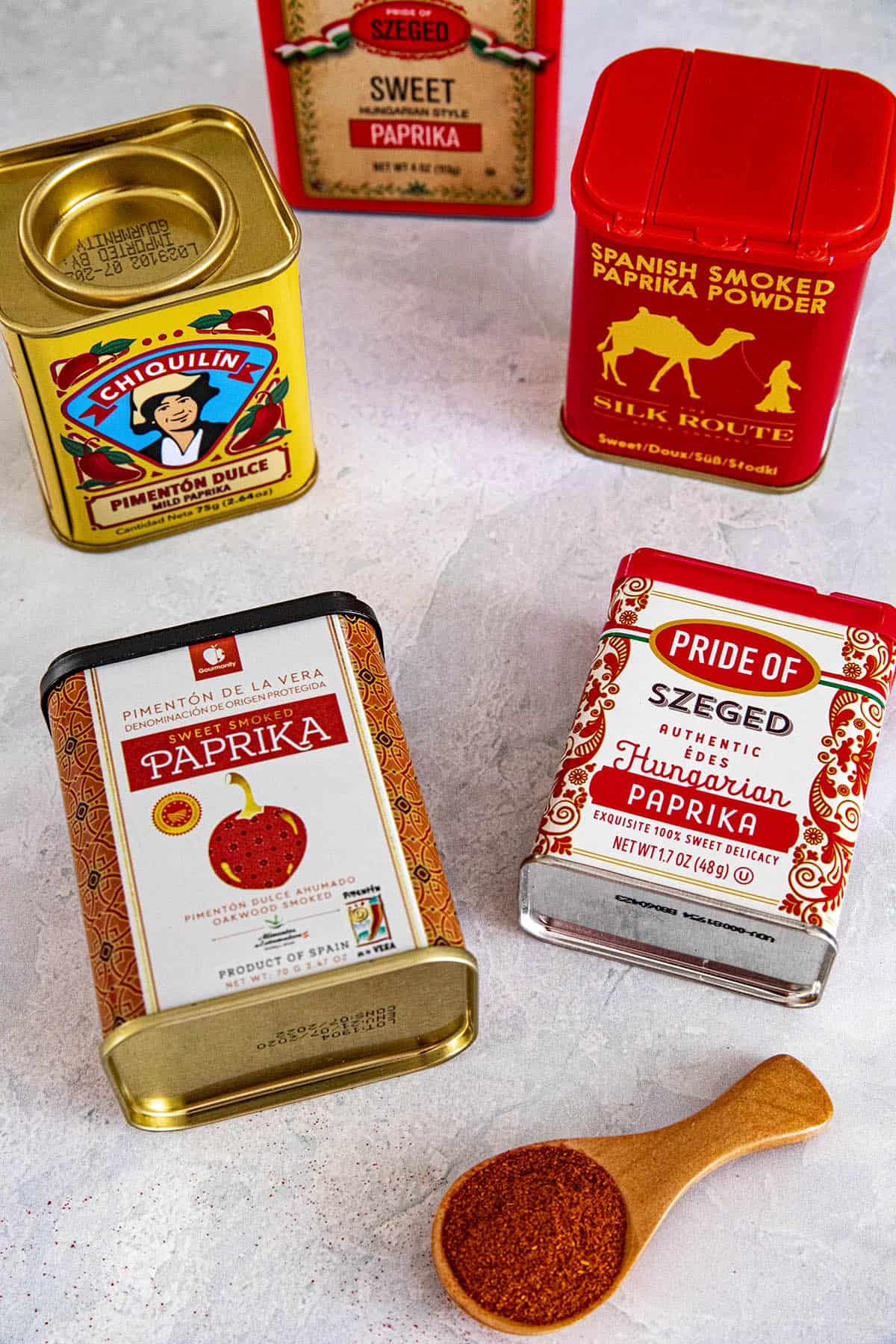Interestingly, many people might be surprised to learn that not all paprika is created equal. The distinction between sweet paprika and regular paprika goes beyond mere culinary preferences. You may have noticed a significant variation in flavor profiles when swapping one for the other in your recipes.
Sweet paprika, which originated in Hungary, is milder and often used to add a rich, vibrant color to dishes without overwhelming them with heat. Regular paprika, on the other hand, can include smoked and spicy variants depending on the region it’s sourced from. The global production and consumption of paprika have grown remarkably, highlighting the importance of understanding these subtle differences.

Unraveling the World of Paprika
Did you know that paprika is one of the most popular spices worldwide? Originating from Central America, it was brought to Europe in the 16th century. Paprika has since become a staple in many global cuisines.
The term “paprika” actually encompasses a variety of ground peppers. These can range in flavor from sweet to spicy and are used for both coloring and seasoning dishes. The primary countries producing paprika today are Hungary and Spain.
Hungarian and Spanish paprikas are particularly famous. Hungarian paprika is known for its sweet and pungent varieties, while Spanish paprika often has a smoky flavor due to the drying process. This adds another layer of complexity to dishes.
There are three basic types of paprika
- Sweet Paprika: Known for its mild flavor and bright color.
- Spicy Paprika: Adds heat and a bit of spiciness to dishes.
- Smoked Paprika: Carries a distinct smoky flavor, often found in Spanish cuisine.
Dissecting the Characteristics of Sweet Paprika
Sweet paprika is favored for its mild and sweet flavor profile. Unlike its spicy counterpart, it doesn’t add heat to dishes. Instead, it enhances the color and flavor subtly.
The vibrant red color of sweet paprika comes from the types of peppers used. These peppers are carefully dried and ground to retain their color. This makes sweet paprika a popular choice for adding a bright, appealing touch to foods.
In cooking, sweet paprika is very versatile. It is often used in stews, soups, and sauces. Its mild flavor allows it to blend well without overpowering other ingredients.
There are several different uses of sweet paprika
- Garnishing: Can be sprinkled on deviled eggs and potato salad.
- Seasoning: Adds flavor to meat rubs and marinades.
- Coloring: Enhances the visual appeal of soups and stews.
Flavor Profile of Sweet Paprika
Sweet paprika provides a mild, sweet taste that can be quite aromatic. It lacks the spiciness found in other types of paprika. This makes it suitable for dishes needing subtle seasoning.
The mild flavor comes from its unique preparation process. The peppers are dried and ground without their seeds, which reduces bitterness and heat. This process retains the pepper’s natural sweetness.
Overall, the mild sweetness makes it great for a variety of dishes. You can use it in everything from goulash to roasted vegetables. Its versatility is one reason why it is beloved by many chefs.
Origin of Sweet Paprika
Hungary is renowned for producing high-quality sweet paprika. The country has a long history of paprika cultivation dating back centuries. Hungarian paprika is considered some of the best in the world.
In Spain, the peppers used for sweet paprika are often smoked before drying. This gives the paprika a unique depth of flavor. The combination of sweetness and smokiness makes it distinctive.
Regardless of its origin, sweet paprika has a special place in many kitchens. Its production techniques and rich history add to its appeal. Whether from Hungary or Spain, it remains a cherished spice.
Health Benefits of Sweet Paprika
Sweet paprika isn’t just about taste; it also offers health benefits. It’s rich in antioxidants, which help protect cells from damage. Additionally, it contains vitamins A and E.
The presence of capsaicin, even in small amounts, can aid in improving circulation. It may also have anti-inflammatory properties. This makes it beneficial for overall health.
Including sweet paprika in your diet can be a simple way to add nutrients. Plus, its bright color and delightful flavor make it an enjoyable addition to meals. From boosting antioxidant intake to providing vitamins, it’s more than just a spice.
Examining the Traits of Regular Paprika
Regular paprika is a versatile spice that comes in various forms. It can range from mild to spicy, offering a spectrum of flavors. This makes it a mainstay in many kitchens.
One of the key traits of regular paprika is its color. The deep red hue is visually striking and adds an appealing look to dishes. The color intensity can indicate the paprika’s quality and flavor strength.
The flavor of regular paprika can vary widely. It can be sweet, smoky, or fiery depending on its origin and preparation. This diversity makes it suitable for both sweet and savory dishes.
There are different types of regular paprika
- Sweet Paprika: Mild and sweet with no heat.
- Hot Paprika: Spicy and adds heat to recipes.
- Smoked Paprika: Known for its rich, smoky flavor.
Comparative Analysis: Sweet Paprika vs Regular Paprika
When comparing sweet paprika and regular paprika, the first noticeable difference is their flavor profile. Sweet paprika has a mild and sweet taste, making it ideal for adding flavor without heat. In contrast, regular paprika can range from mild to spicy.
The color intensity also varies between these types. Sweet paprika generally has a bright red hue, enhancing the visual appeal of dishes. Regular paprika can range from deep red to orange, depending on the variety and processing method.
Another key difference lies in their culinary uses. Sweet paprika is often used in dishes where a subtle, sweet flavor is desired. Regular paprika, on the other hand, is versatile and can be used for both sweet and savory dishes, depending on its variety.
The origins of these paprikas also set them apart. Sweet paprika is mainly associated with Hungary, known for its high-quality, sweet varieties. Regular paprika is more commonly linked with both Hungarian and Spanish cuisines, offering a range of flavors from sweet to smoky.
There are different factors to consider
- Flavor: Sweet vs. spicy.
- Color: Bright red vs. varied hues.
- Uses: Specific dishes vs. versatile uses.
Despite their differences, both types of paprika serve essential roles in cooking. Their unique flavors and colors can enhance a variety of dishes. Understanding these traits helps in choosing the right paprika for your culinary needs.
The Impact of Sweet and Regular Paprika on Global Cuisine
Paprika has a profound influence on cuisines worldwide. Sweet paprika is often used to color and flavor dishes without adding heat. This makes it a favorite in Central and Eastern European cooking.
In Hungarian cuisine, sweet paprika is a staple ingredient, particularly in dishes like goulash and paprikash. It adds a distinct flavor and rich color that’s hard to achieve with any other spice. Spain also leverages sweet paprika, known as “pimentón,” especially in sausages and paellas.
Regular paprika, with its varied intensities, finds a place in a diverse range of dishes. From spicy Mexican salsas to smoky Spanish chorizos, its versatility is unmatched. Regular paprika’s flavor spectrum allows it to fit into any dish, whether you need a mild seasoning or a fiery kick.
These different uses extend beyond regional boundaries
- Europe: Enhances stews and meat dishes.
- America: Bold flavor in BBQ rubs and sauces.
- Asia: Adds depth to spice blends and soups.
Both sweet and regular paprika play vital roles in seasoning, coloring, and enhancing the taste of foods globally. Their impact on cuisine is significant, deepening the flavor profiles of countless dishes. Whether sweet or spicy, paprika remains an essential spice in kitchens around the world.
Key Takeaways
- Sweet paprika and regular paprika are different in flavor.
- Sweet paprika is mild and adds color without heat.
- Regular paprika can be mild, spicy, or smoky.
- Both types enhance the taste of dishes differently.
- Knowing the difference helps in choosing the right spice.

Frequently Asked Questions
Below are some common questions about sweet paprika and regular paprika. These questions will help you understand the differences, uses, and benefits of both types.
1. What dishes can benefit most from using sweet paprika?
Sweet paprika is perfect for recipes that need a mild yet flavorful kick without heat. It’s great in stews, soups, sauces, and even sprinkled on deviled eggs or potato salad.
This type of paprika adds not only flavor but also a beautiful color to your dishes. Its mild taste ensures it doesn’t overpower other ingredients while giving an appealing appearance.
2. Does regular paprika come in different varieties?
Yes, regular paprika comes in multiple varieties including sweet, hot, and smoked. Each one offers a distinct flavor profile ranging from mild and slightly sweet to intensely spicy or smoky.
The choice of variety depends on your recipe’s requirements. For example, hot paprika is used where spiciness is desired while smoked gives a rich depth of flavor.
3. Can I use sweet paprika as a substitute for regular paprika?
You can substitute sweet paprika for regular if your dish doesn’t require heat or intense smokiness. Sweet paprika will provide color and mild flavor without altering the original taste significantly.
If a recipe calls for smokiness or spice, you might need to mix sweet with some chili powder or smoked paprika. This ensures you achieve the intended flavor profile.
4. Are there health benefits to eating sweet and regular paprika?
Both types of paprika offer health benefits such as being rich in vitamins A and E, antioxidants that protect cells from damage. Additionally, they contain capsaicin which has anti-inflammatory properties.
This makes them beneficial for overall health when included in diets regularly but within recommended amounts due to their potent nutrients.
5. How should I store my paprikas to keep them fresh?
Paprikas should be stored in cool, dark places away from direct sunlight to maintain their vibrancy and potency over time. Air-tight containers are ideal for preventing exposure to humidity which could spoil them faster.
This proper storage technique ensures your spices remain flavorful longer without losing any significant quality till completely utilized
Conclusion
Understanding the nuances between sweet and regular paprika can significantly elevate your culinary creations. Sweet paprika offers a mild, vibrant addition to dishes, while regular paprika provides a spectrum of flavors from sweet to spicy. Knowing when to use each type can make all the difference in your cooking.
Both types of paprika have their unique qualities and benefits, making them indispensable in diverse cuisines. By keeping these distinctions in mind, you can enhance the flavor, color, and aroma of your recipes, achieving culinary excellence. This knowledge empowers you to make the best choice for each dish.

